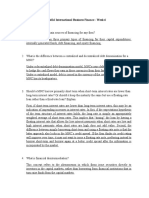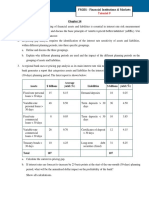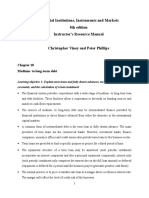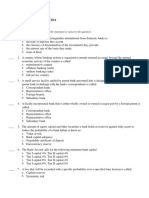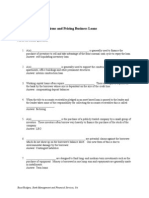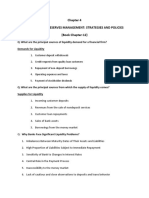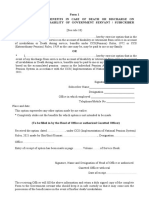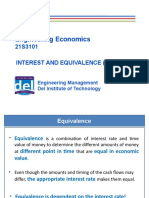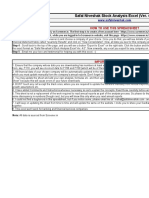FM201 - Financial Institutions & Markets
Tutorial 8
Chapter 10
1. As the finance manager of a small manufacturing business, you are negotiating a fully drawn
advance from the local bank, but the board of directors have indicated that they are concerned at the
fees being charged by the bank. Explain to the directors the range of fees typically charged, and why
the bank charges these fees.
2. As the owner of a small architectural firm, you approach the Commonwealth Bank to obtain a term
loan so that the firm can buy a new computer-aided drawing machine. The bank offers your
company a loan of $28 500 over a three-year period at a rate of interest of 8.65 per cent per annum,
payable at the end of each month. Calculate the monthly loan instalment.
3. The architectural firm owner in Question 4 also approaches the National Australia Bank to obtain a
quote on the loan facility. The competitor bank (NAB) also offers the company a fully drawn
advance of $28 500 over a three-year period at a rate of interest of 8.65 per cent per annum, payable
in advance at the beginning of each month. Calculate the monthly loan instalment. Explain why the
instalment payment is different from the instalment in Question 2.
4. After three years of excellent business growth, a local mattress manufacturer decides to expand and
purchase new business premises costing $1 250 000. In addition, establishment expenses of 0.50 per
cent of the purchase price, plus estimated legal expenses of $15 000 are payable. The total cost to
purchase the property will be financed by $225 000 of the firm’s own funds plus a mortgage loan
from ANZ bank. The bank offers a mortgage loan at 8.15 per cent per annum. The loan will be
amortised by monthly instalments over the next 12 years, payable at the end of each month. What is
the amount of each monthly instalment?
5. On 1 January 2016 a company issued five-year fixed-interest bonds with a face value of $2 million
to an institutional investor, paying half-yearly coupons at 8.36 per cent per annum. Coupons are
payable on 30 June and 31 December each year until maturity. On 15 August 2017 the holder of the
bonds sells at a current yield of 8.84 per cent per annum. Calculate the price at which the
institutional investor sold the bonds.
� FM201 - Financial Institutions & Markets
Tutorial 8
Chapter 11
6. BHP-Billiton Limited is to issue ECP into the London euronote market. The 90-day ECP issue has a
face value of USD100 million and a yield of LIBOR plus 25 basis points. (Assume the 6-month
LIBOR is 5.5% per annum). Calculate the amount raised on issue by BHP-Billiton.
7. Corporate bonds may be broadly categorised as domestic bonds, foreign bonds and eurobonds. What
characteristics of a bond enable it to be labelled as a eurobond, as opposed to a domestic bond or a
foreign bond? Define and provide examples of each of these types of bonds.
8. Rio Tinto Limited has decided to issue debt securities into both the euronote market and the
eurobond market. The company makes the following issues:
- NIFs maturing in 180 days with a face value of USD150 million and yielding LIBOR plus 123
basis points.
- Straight bonds with a face value of USD350 million, paying an annual fixed coupon of 8.00 per
cent per annum and maturing in exactly seven years. Rio Tinto is issuing the bonds at a 25 basis
point premium above the current market yield on similar bonds issued by other borrowers into
the market.
What is the total amount of funds raised with each issue? (Show your calculations)
(Note: Normally you would look at the relevant Thomson-Reuters screen to ascertain LIBOR.
However, for this question, assume the 6-month LIBOR is 5.42% per annum.)
9. A euro bond with £100m maturity value has a 7% annual coupon and 10 years left to maturity.
i. What price will the bond sell for assuming that the 10 year yield to maturity in the market is
4%, 7% and 10% respectively? (Show your calculations)
ii. What would be you answer to part (i) if the bond only had 8 years to maturity?
iii. What does your answer to parts (i) and (ii) tell you about the relationship of bond prices,
term to maturity and changes in bond yields?



